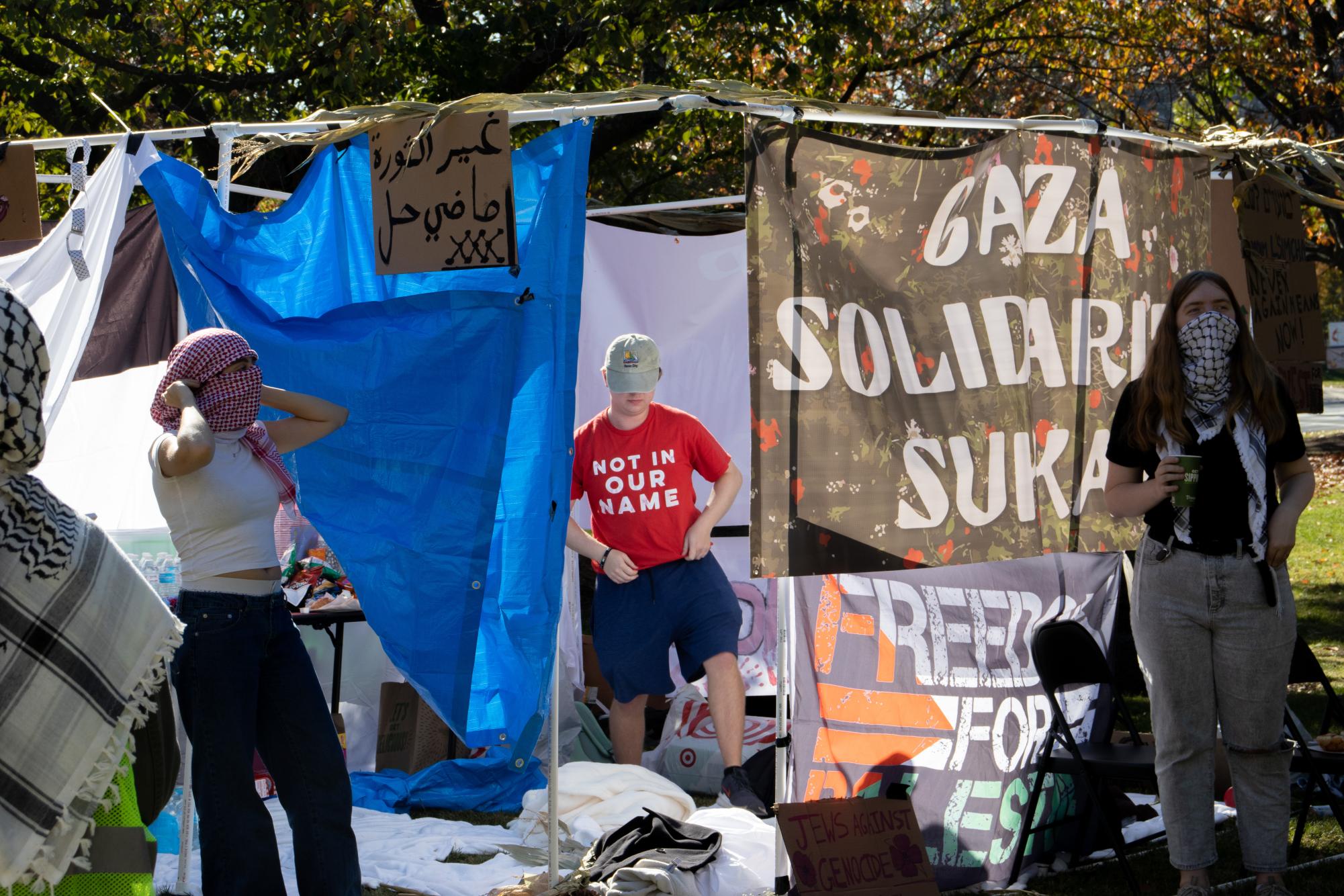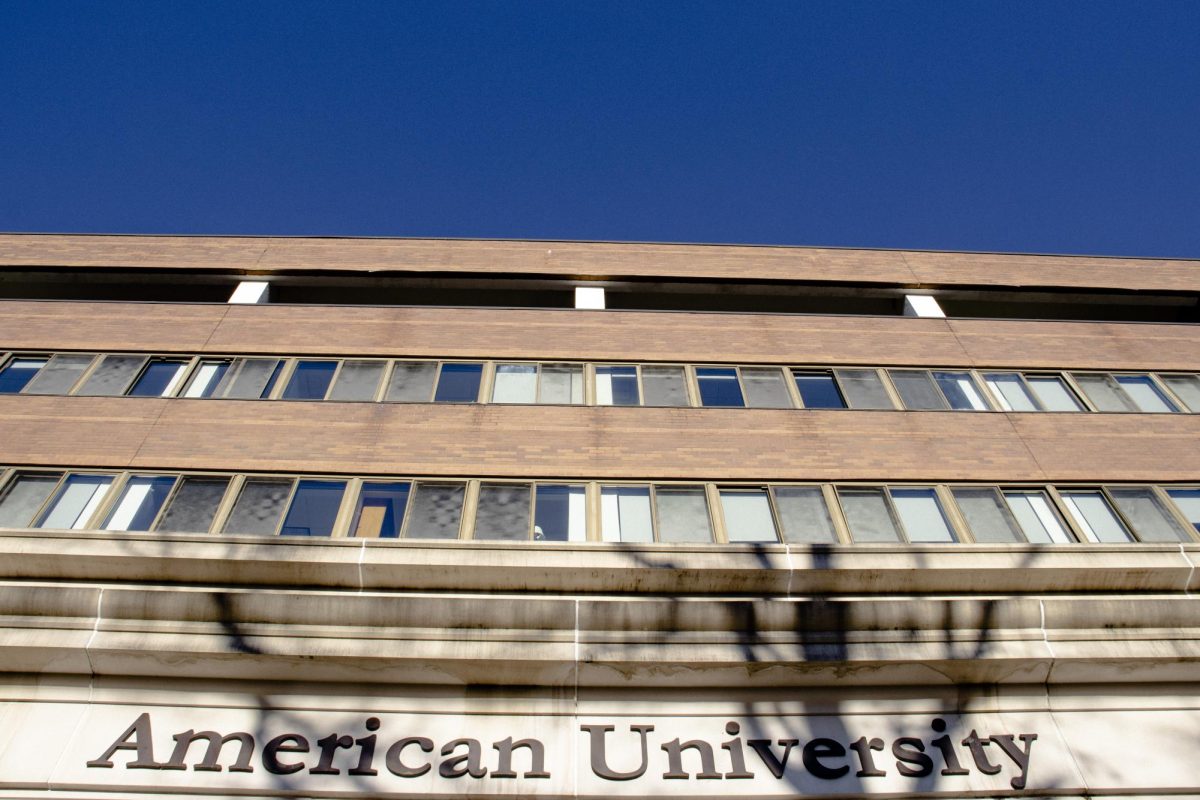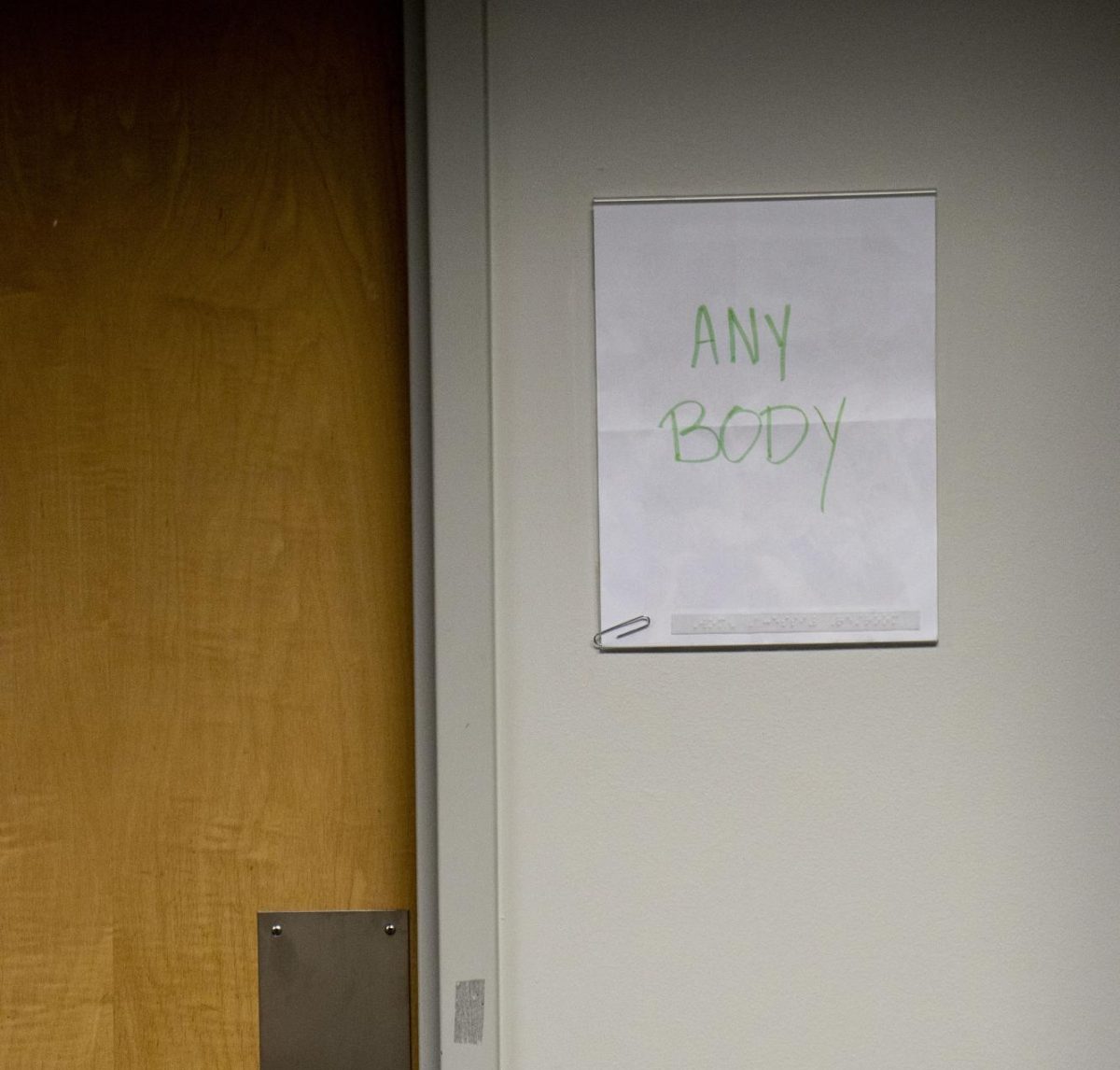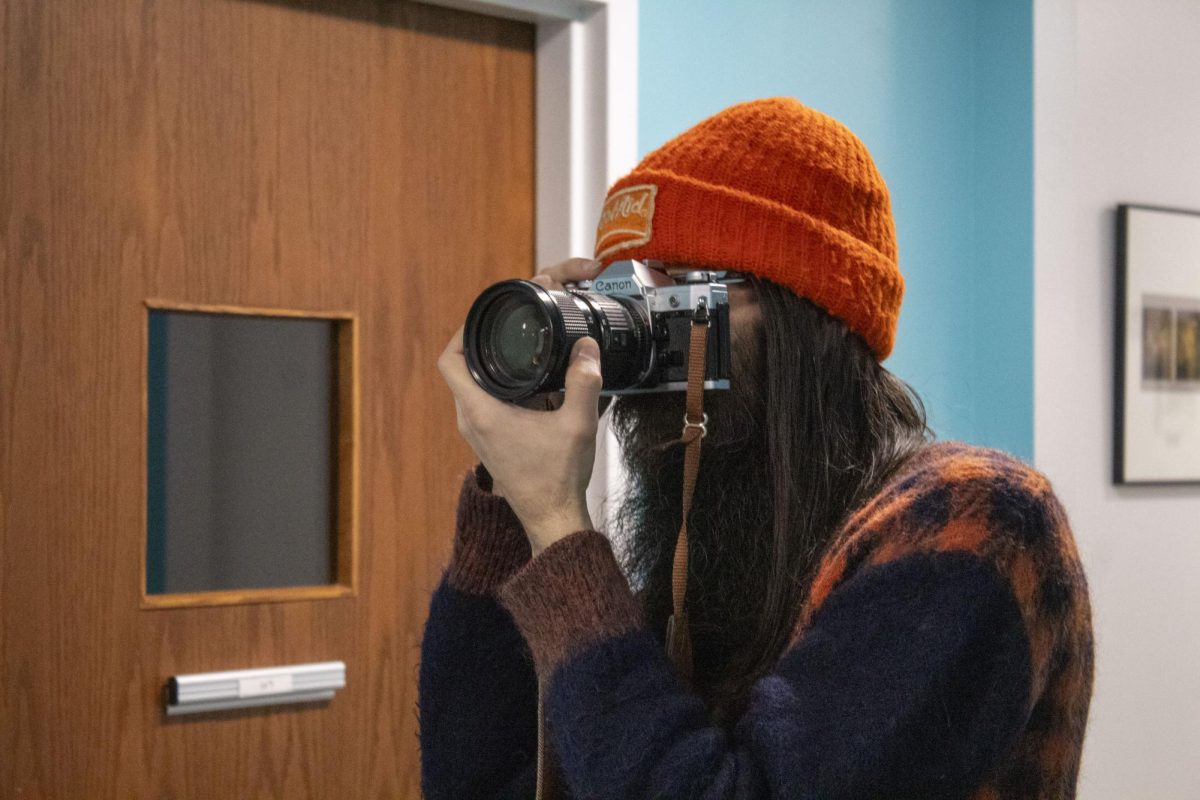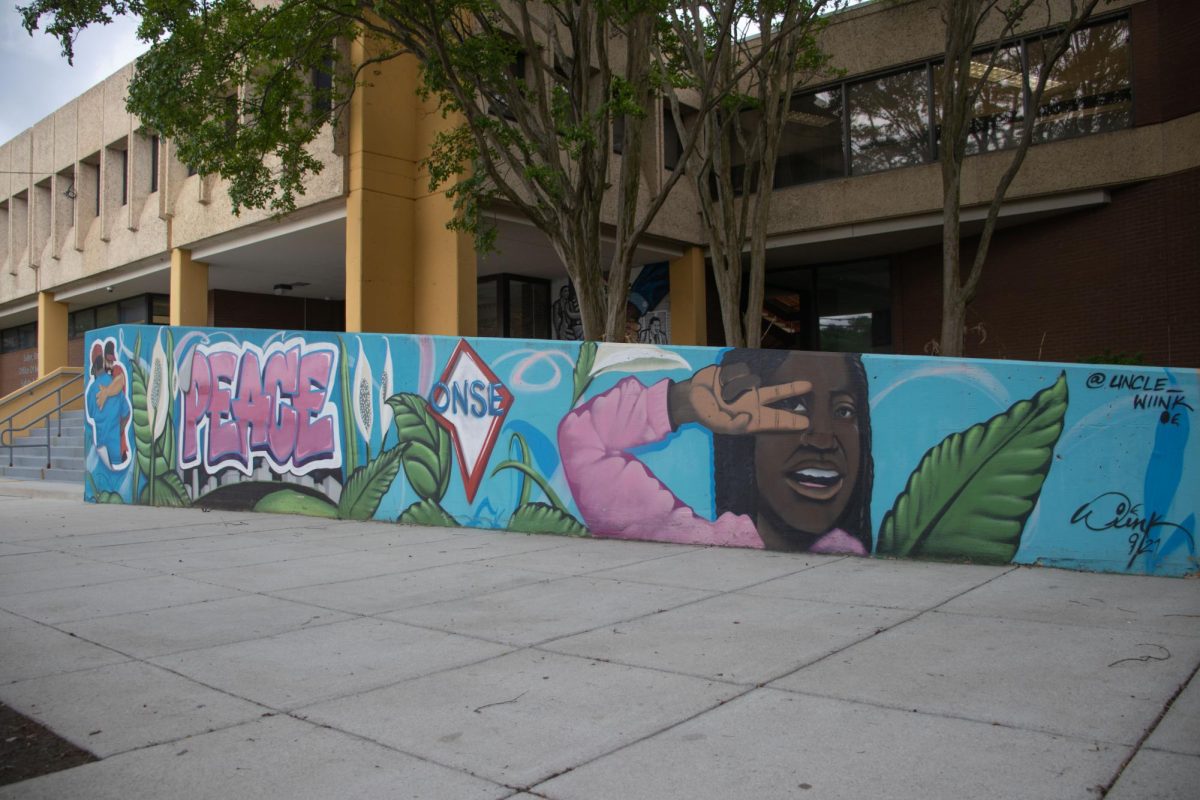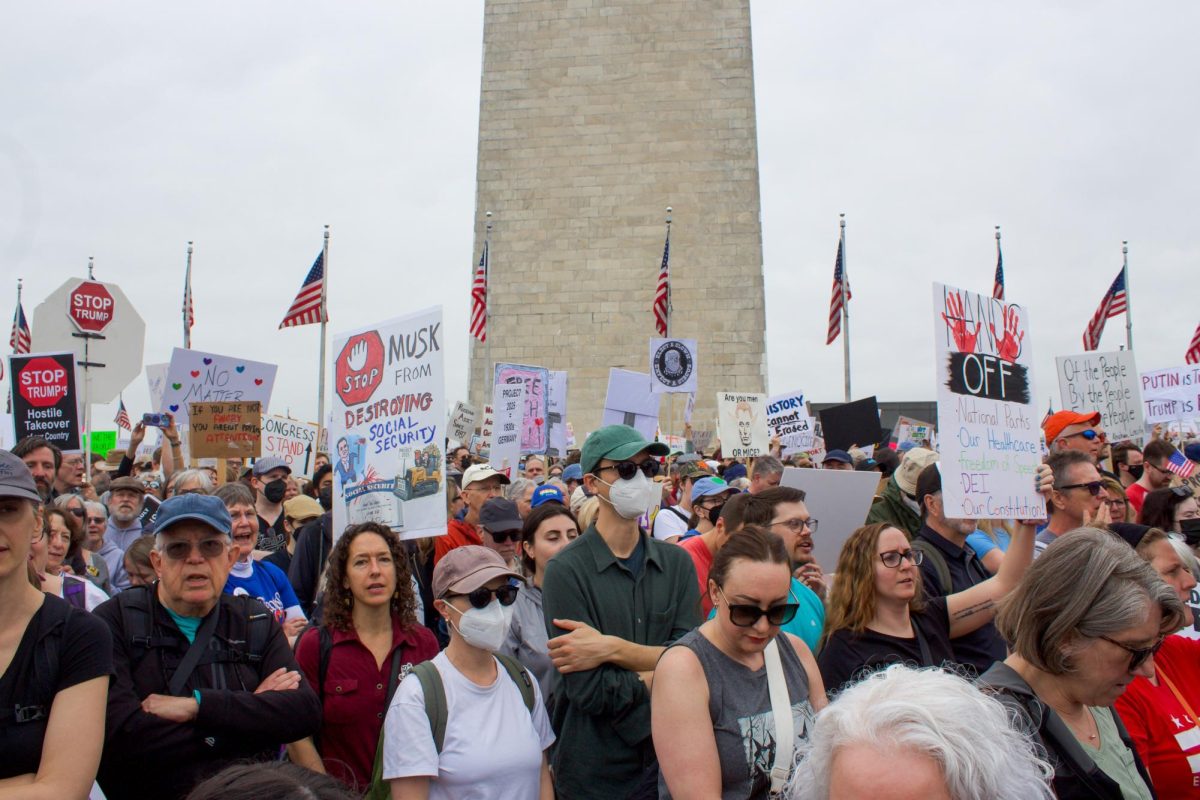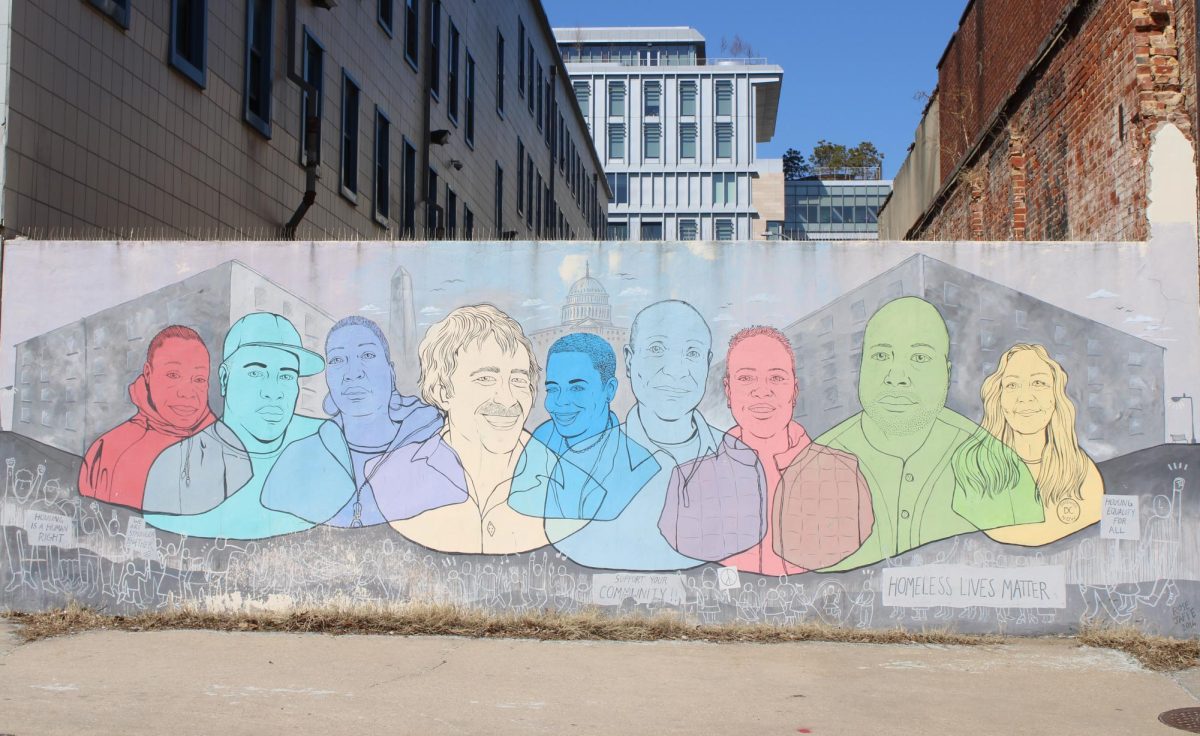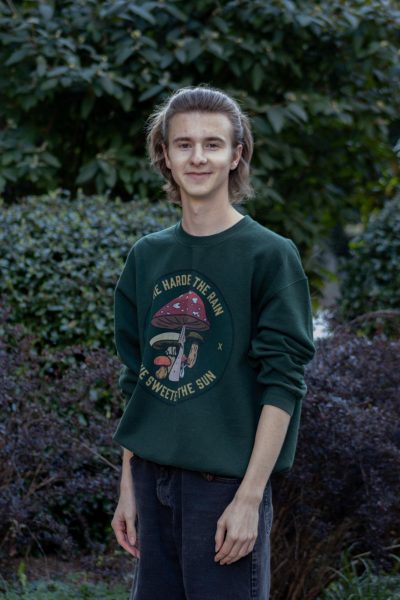At 9 a.m. on Oct. 23, a small cadre of activists stood over a pile of white PVC pipes and cellophane snack bags by Woods Gate next to Hurst Hall. By 9:15, they had raised a skeletal frame supported by pipe fittings and black masking tape. Two minutes later, a large printed banner reading “Gaza Solidarity Sukkah” hung from the plastic frame by zip ties, just in time for a crowd of students crossing Nebraska Avenue to witness the demonstration. It was soon joined by another banner reading “Stop Arming Israel.”
The white structure, clothed in canvas tarps and hand-painted cardboard signs, was a sukkah, raised in observance of the Jewish holiday Sukkot.
Nearly 20 demonstrators, most of whom were students, built the Gaza Solidarity Sukkah as a continuation of nationwide activist efforts pushing universities to divest from companies that profit from the Israel-Hamas war. According to Miriam, an organizer at the sukkah who declined to give her last name, the action was organized by Jewish students.
Sukkot serves as both a harvest festival and as commemoration of the 40 years the Israelites spent wandering the desert in the biblical story of Exodus. Because the Israelites lived in temporary structures during their exile from the Promised Land, modern Jews erect sukkot: temporary structures of their own, in which they eat, sleep and pray.

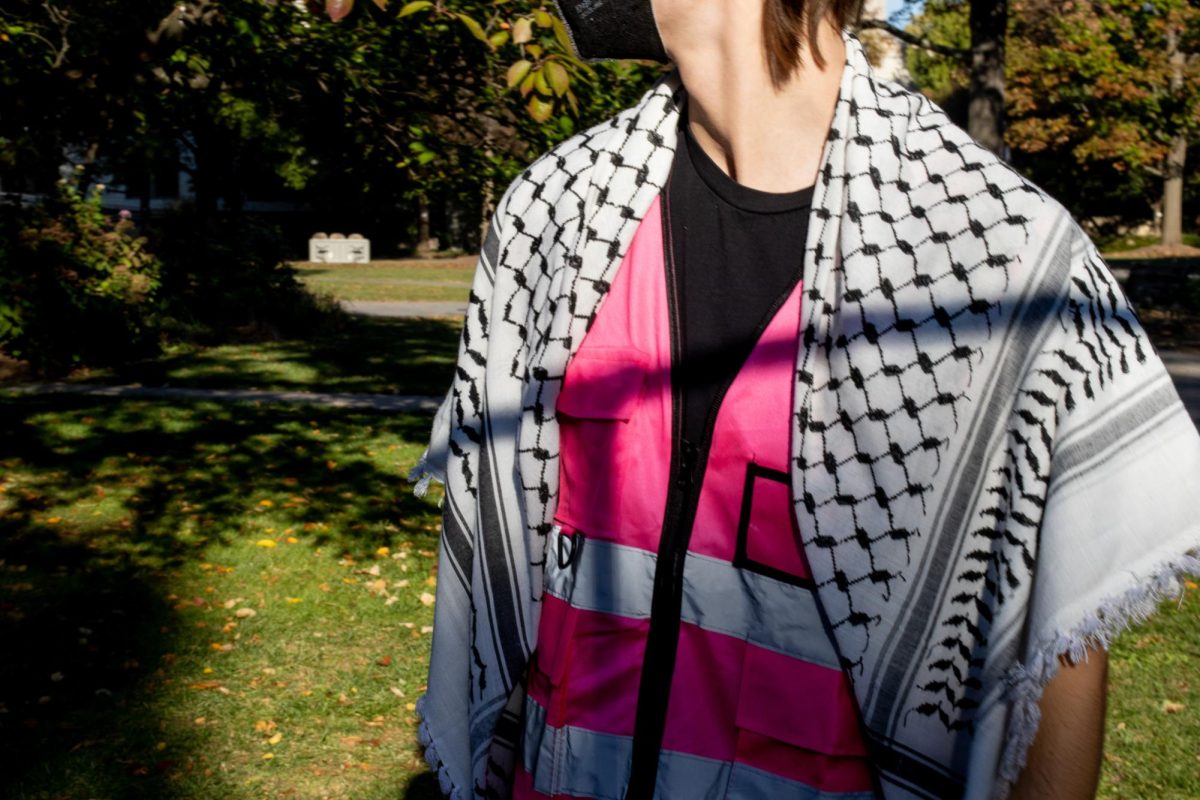
The demonstration comes after the creation of similar sukkot at Northwestern University, New York University and UCLA.
Because of Sukkot’s significance as a harvest festival, the key theme of the day’s activism was the prevention of the harvest in Gaza. According to an Al Jazeera article, over half of the farmland in Gaza has been damaged or destroyed, and according to a UN agency report, 96 percent of Gaza’s population is food insecure. Flyers in the sukkah read, “There is no harvest during genocide.”
After Hamas, an internationally recognized terrorist organization and the ruling party in the Gaza strip, invaded Israel on Oct. 7, 2023, killing hundreds of civilians and taking hundreds hostage, Israel responded with a bombing campaign that some have criticized as indiscriminate or genocidal.
Philippe Lazzarini, commissioner-general of the UN Agency for Palestine Refugees, wrote on X on Oct.21 that Israel has blocked humanitarian aid from entering the strip, leading to outbreaks of famine and disease. According to a UN impact report using data from the Gaza Health Ministry, nearly 43,000 Palestinians have been killed, including over 13,000 children.
Not all of the activists at the sukkah were AU students. They also came from several other universities in Washington, Maryland and Virginia, according to an organizer who asked not to be named, and some were not students at all.
Ramzi, another organizer who declined to give his last name, is a recent graduate of Virginia Commonwealth University.
“I’m a millennial, and I see a lot of Gen Z people pick up the mantle, and I feel like this generation is just without fear,” Ramzi said. “It’s incredible to watch. There’s such power in these students, and I’m loosely proud to be part of it.”
Ramzi, who is Palestinian, said his grandmother fled to England and then the United States after the Arab-Israeli War of 1948, then was denied her request to be buried in Palestine.

By around 9:24 a.m., protestors had almost completed the sukkah, and activity slowed down. Decorating the sukkah is a mitzvah, or good deed, in Jewish tradition, so some protesters sat on the ground and painted flowers on cardboard signs. Other demonstrators conversed with passersby or each other. A Palestinian flag, taller than many of the students, hung from the sukkah, facing the motorists driving down Nebraska Avenue.

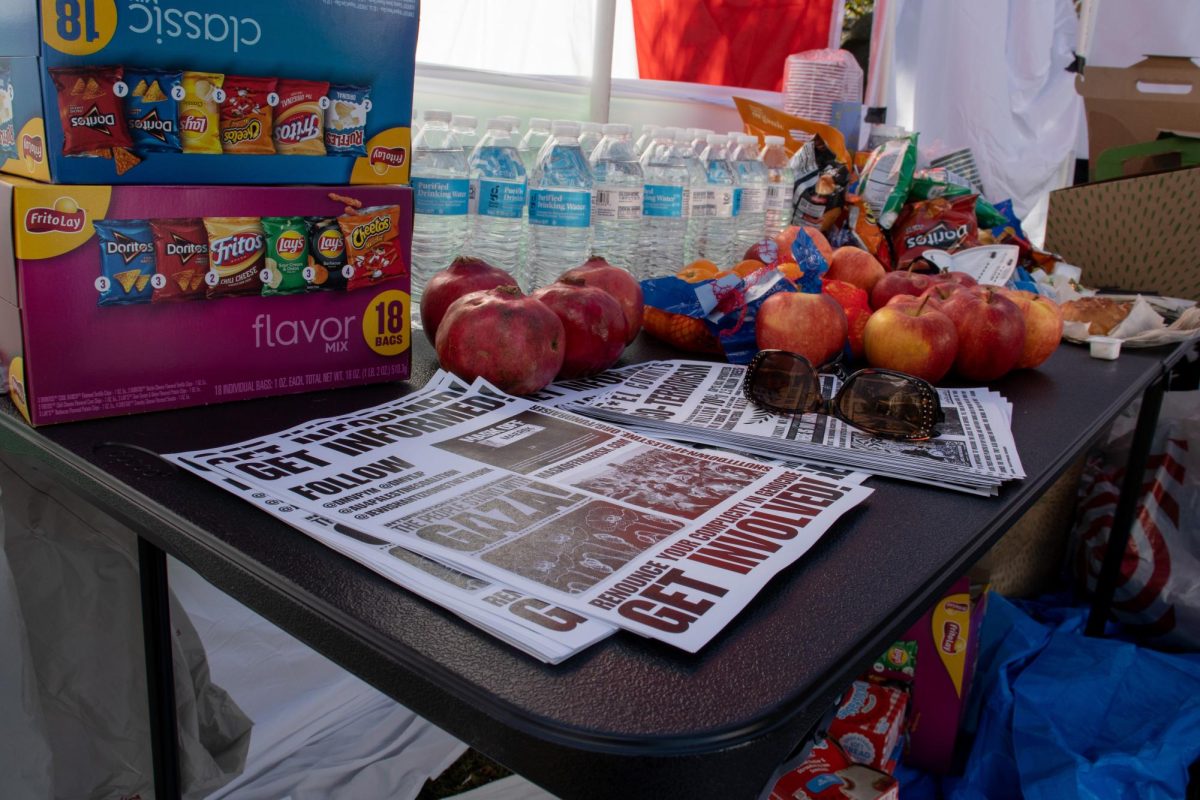
Organizers instructed most of the protestors not to talk to police or media; Miriam, a Jewish Georgetown student, was one of the few selected to speak for the others. She said she and other Jewish activists want to separate their religion from Zionist institutions and show solidarity with the Palestinian people. Like many of the other protestors, she wore a keffiyeh, a traditional Arab headdress, over her face.
“I’ve been raised to have certain beliefs about how my religion impacts the way that I should be going about my day-to-day life, and part of that is the idea of tikkun olam, to heal the world,” Miriam said. “And to me, world repair means standing against Zionism, standing against imperialism and all of the forces of oppression in our world.”
Around 10 a.m., people began a planned program of speeches and chanting. Some demonstrators called out pro-Palestinian slogans, while others recited prayers in Hebrew. A few partook in Sukkot traditions like attempting to put a roof on the sukkah or shaking a bundle of branches and a citrus fruit known as a lulav and etrog.
At 10:23 a.m., AU Police Department first appeared on the scene. Initially, two uniformed individuals arrived in an AUPD car and observed from a distance, while one of them made a call on his phone. A few minutes later, Dayne Hutchinson, AU’s assistant vice president for student engagement and success, joined them.
Hutchinson approached one of the sukkah’s organizers and could be heard saying the sukkah was unauthorized to be on campus property because the organizers did not properly book the space and time with AU. Hutchinson said the University Center manages the quad and approves events there. The organizer, who asked not to be named, told AWOL via text message that Hutchinson said the university needed 72 hours notice.
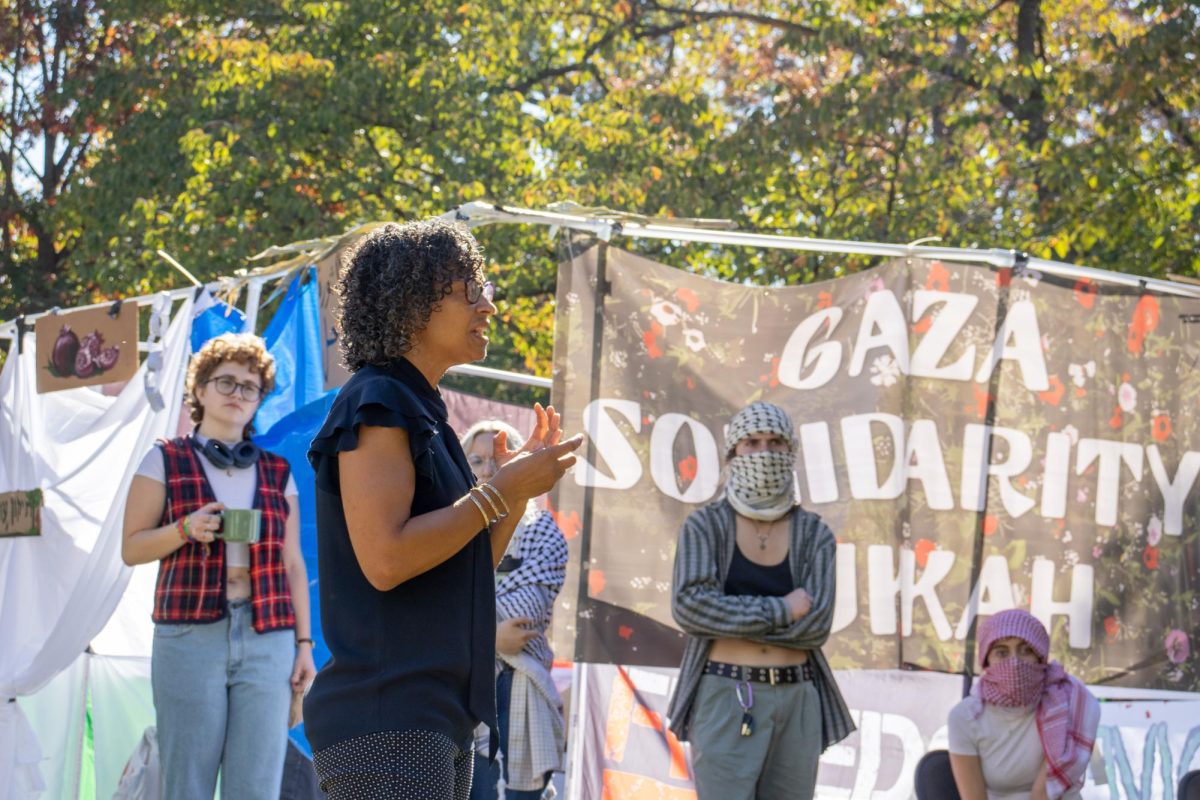
Hutchinson then walked away, and programming continued as planned. At 10:43 a.m., a corner of the sukkah collapsed, but protesters quickly built it back up. Faculty from various schools and AU Student Government senators came to offer support, address the crowd or just observe.
Mohammed Abu-Nimer, a professor of peace, human rights and cultural relations at AU, said he came because he is interested in what the students are doing and how the university would respond.
“I think students and faculty have the right as individuals and also as groups to collectively express their views,” Abu-Nimer said. “And I think the university is a place, always been a space for everybody to say what they say, what they feel, what they want, what they think, given one condition of keeping the safety of everyone and protecting the rights of everyone to speak up.”
Abu-Nimer, who is also the Abdul Aziz Said Chair in International Peace and Conflict Resolution, said much of his recent scholarly work has focused on how Israelis and Palestinians can work together towards a resolution of their conflict that can secure the dignity and freedom of all people involved.
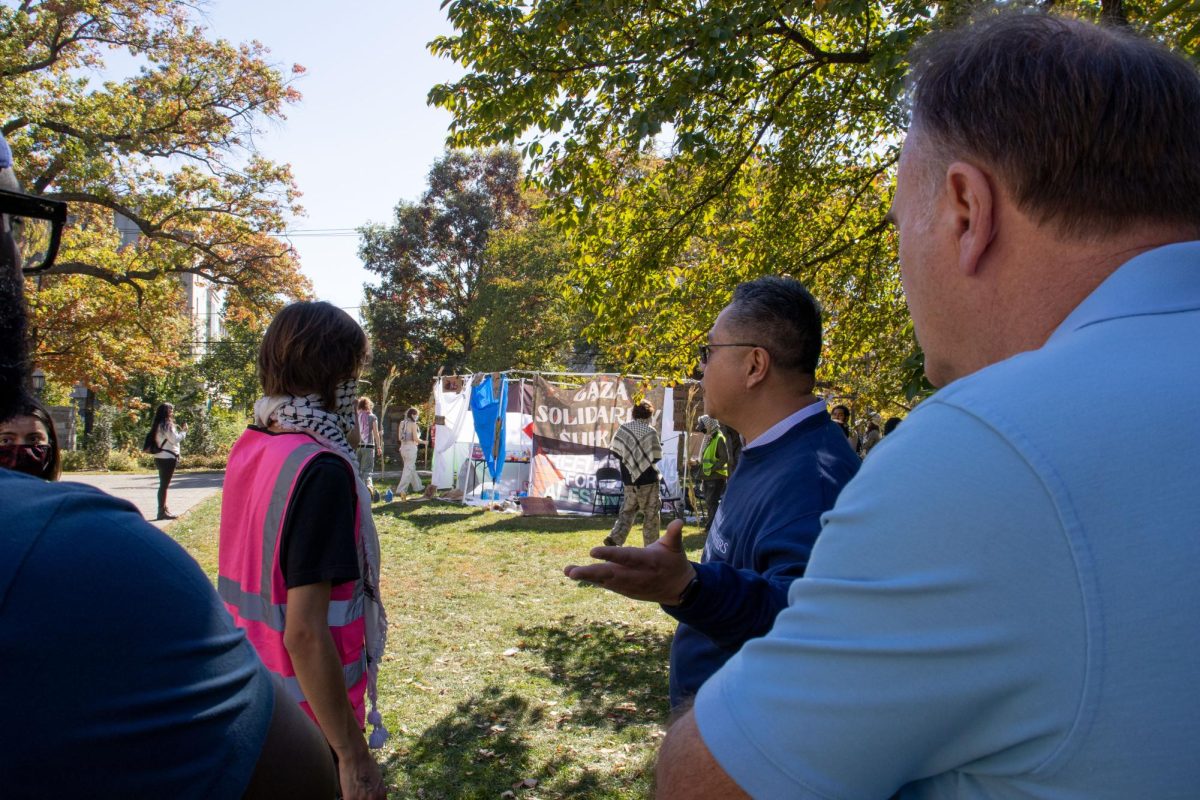
At 11:33 a.m., administrators returned to the sukkah. Phil Morse, assistant vice president for emergency management, and Raymond Ou, vice president of student affairs, spoke with an organizer, issuing their final warning. The same organizer said the students would not take it down until the end of Sukkot, meaning the end of the day. Morse said he understood but that the sukkah was in violation of university policy and the students would have to dismantle it.
Morse also told the organizer he recognized that removing the sukkah could be uncomfortable because of religious implications.
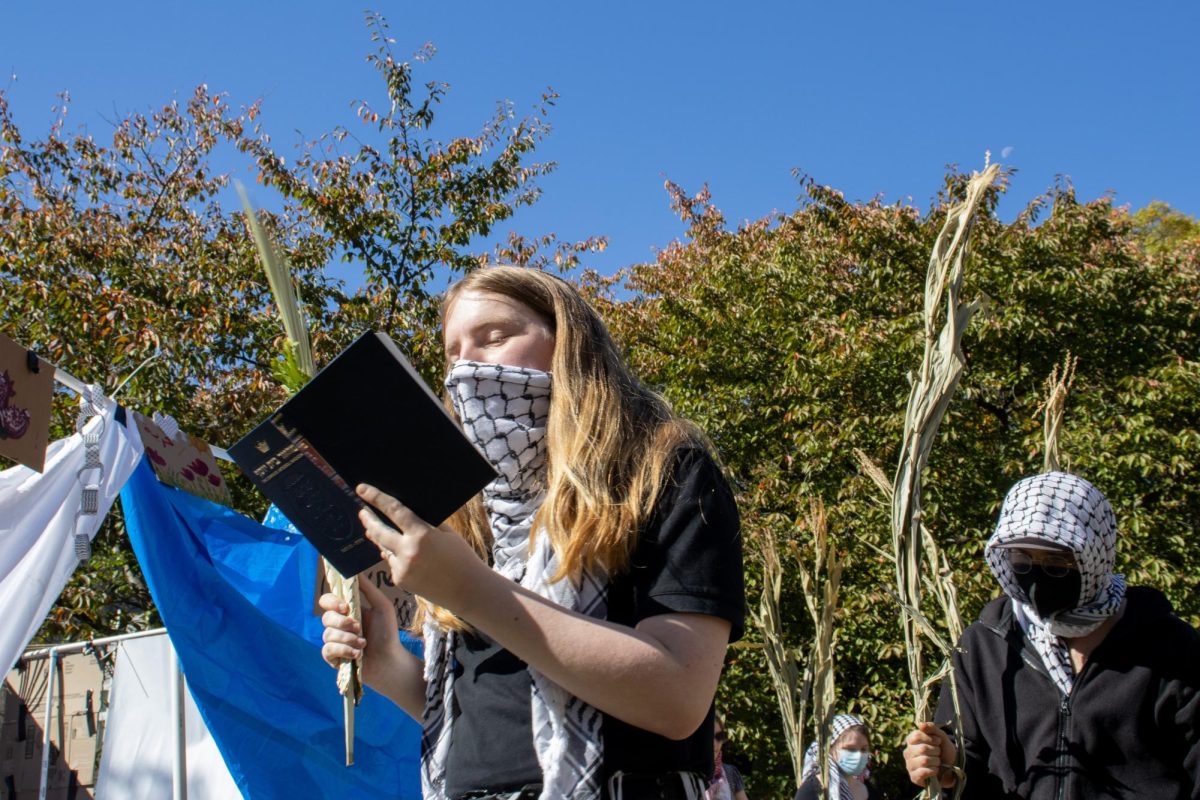
As the organizer left to speak with other protestors, a faculty member asked for clarification about consequences the protestors might face. Morse said the next time he and other administrators returned, they would “impose conduct.”
While organizers and administrators discussed the sukkah’s legitimacy, protestors marched in circles around it, chanting blessings and praising God.

The protest continued. Non-student activists were also present at the sukkah. Sima Dajani, an IT consultant, said she found out about the event from Instagram and came up from downtown Washington to offer support.
“I want to support these students in their effort to spread awareness about the genocide,” Dajani said. “There’s a genocide happening right now, and nobody cares, except for a small group of individuals with heart and conscience in little pockets of the country.”
Some AU students were in favor of the demonstration being shut down. Isaac DiIorio, a Jewish senior in the School of International Service, said the protestors’ cause was “very valid,” but he found the use of Sukkot to make a political statement offensive.
“A lot of the times, I don’t think that students understand what they’re protesting and what they’re using to protest,” DiIorio said. “You know, Sukkot is a celebration of the fall harvest, and I don’t understand why you’re using that as a way to protest a territorial and political war that has nothing to do with religion.”
At 12:11 p.m., Miriam said demonstrators knew that the sukkah would not be allowed to remain for much longer. Protestors began taking down the large printed decorations. One picked up the massive flag facing Nebraska Avenue, paraded it around in the air for a few moments and then folded it up. The protestors did not remove the cardboard signs from the sukkah.
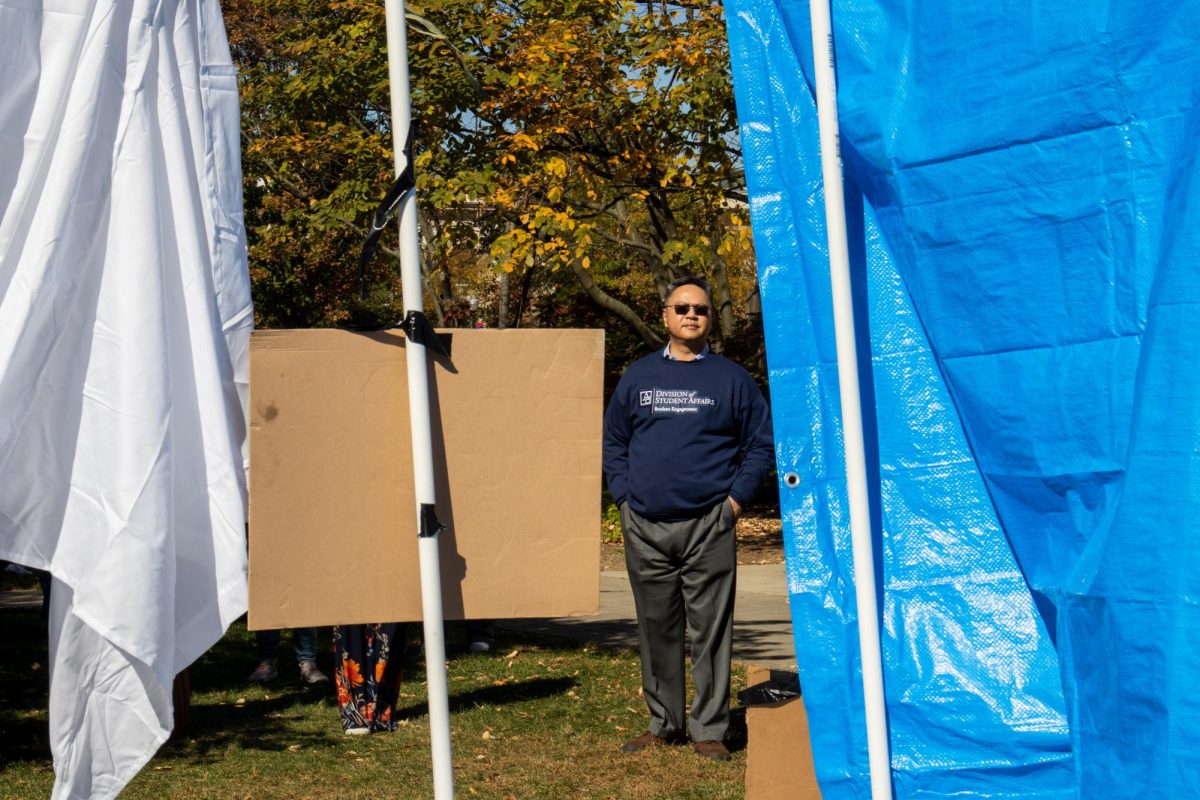
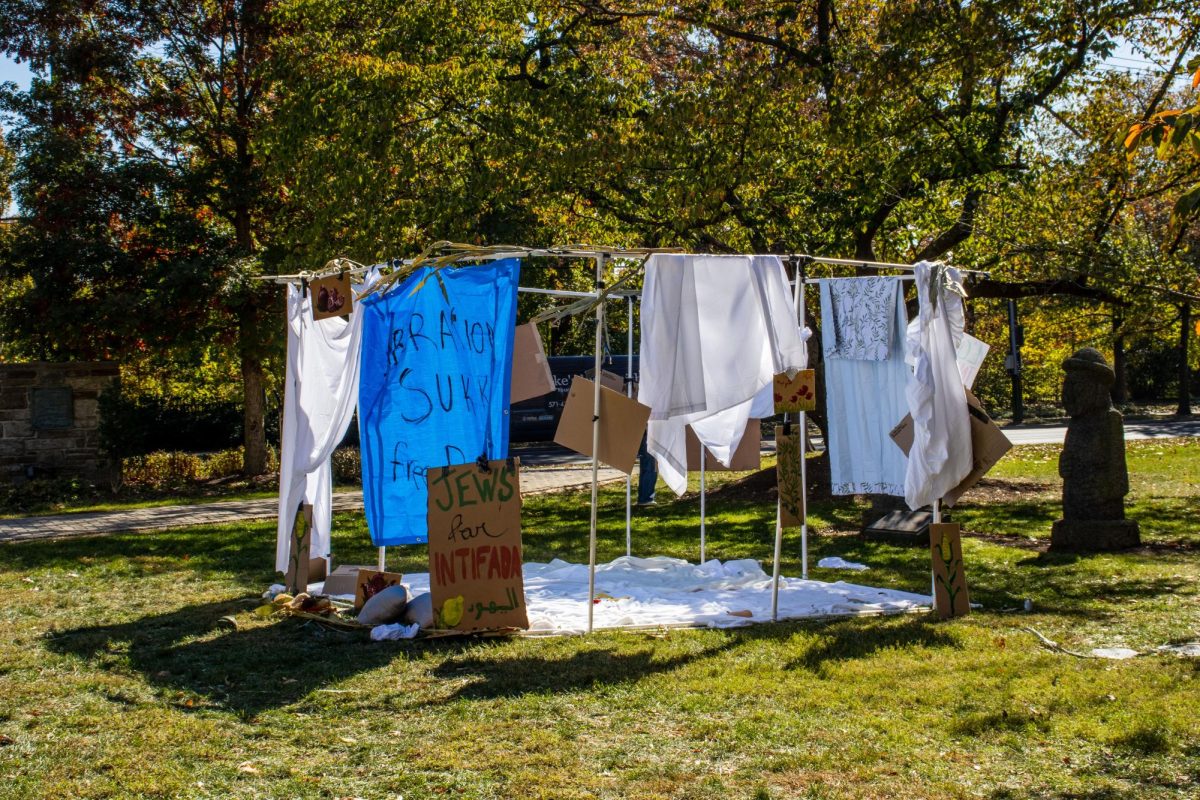
At 12:23 p.m., protestors moved to the quad and continued their programming. By 12:28 p.m., the sukkah was empty. Morse and Ou approached to start its dismantling.
Between 12:33 and 12:42 p.m., Morse and two facilities management workers cut zip ties, folded blankets and snapped fitted pipes apart, removing what was left of the temporary structure. A pickup truck drove away with its remains, including several hand-painted cardboard signs, blankets that lined the ground inside the frame and a folding chair brought by the organizers. Dajani moved in their wake, collecting flowers that once ornamented the sukkah.
Fewer than four hours after it had appeared, the sukkah was gone. The organizers completed their programming on the quad, then dispersed.



Miriam said it was clear that the sukkah was removed because of the protestors’ political beliefs. Walking back from a broadcast news interview on the nearby sidewalk, she watched the facilities management pickup truck drive away with the remains of the sukkah. With her keffiyeh pulled down, her entire face was now visible.
Matt Bennett, AU’s vice president and chief communications officer, said in an email to AWOL that community members can reserve space for any activity and request permission to build structures.
“AU strongly supports the practice and expression of religious and cultural beliefs and traditions through many different forums in our community and our policies support the safe conduct of these important activities,” Bennett said.
AU requires that people who intend to build structures receive approval from the university, according to its facilities use policy, with decisions about structures up at the discretion of the “appropriate university official.” The policy also says AU will not discriminate based on the viewpoint reflected in their demonstration.
Bennett said personnel from Student Affairs and AUPD informed the demonstrators multiple times of the policy violation, and when they did not comply, university personnel removed the sukkah. He said AU is responsible for enforcing policies as part of its commitment to campus safety.
Miriam said the university’s response is proof of both repression on college campuses and the power of students to organize.
“Going forward, we know that this repression will continue, and that’s not something that scares us,” Miriam said. “It’s just something that shows how powerful we are and how we are a threat to the university’s ability to continue its complicity in genocide. And so I think this is just giving us more momentum to keep going, keep the student movement going and continue to fight.”
Editor’s Note: AWOL is referring to the present conflict between Israel and militant Palestinian group Hamas a war, based off of AP Style’s most recent guidance. The AP Style Israel-Hamas Topical Guide has been temporarily removed for updates and changes. AWOL will continue to use the most recently-published guidance and reassess when updates are made. Any feedback on this article can be emailed to [email protected].


